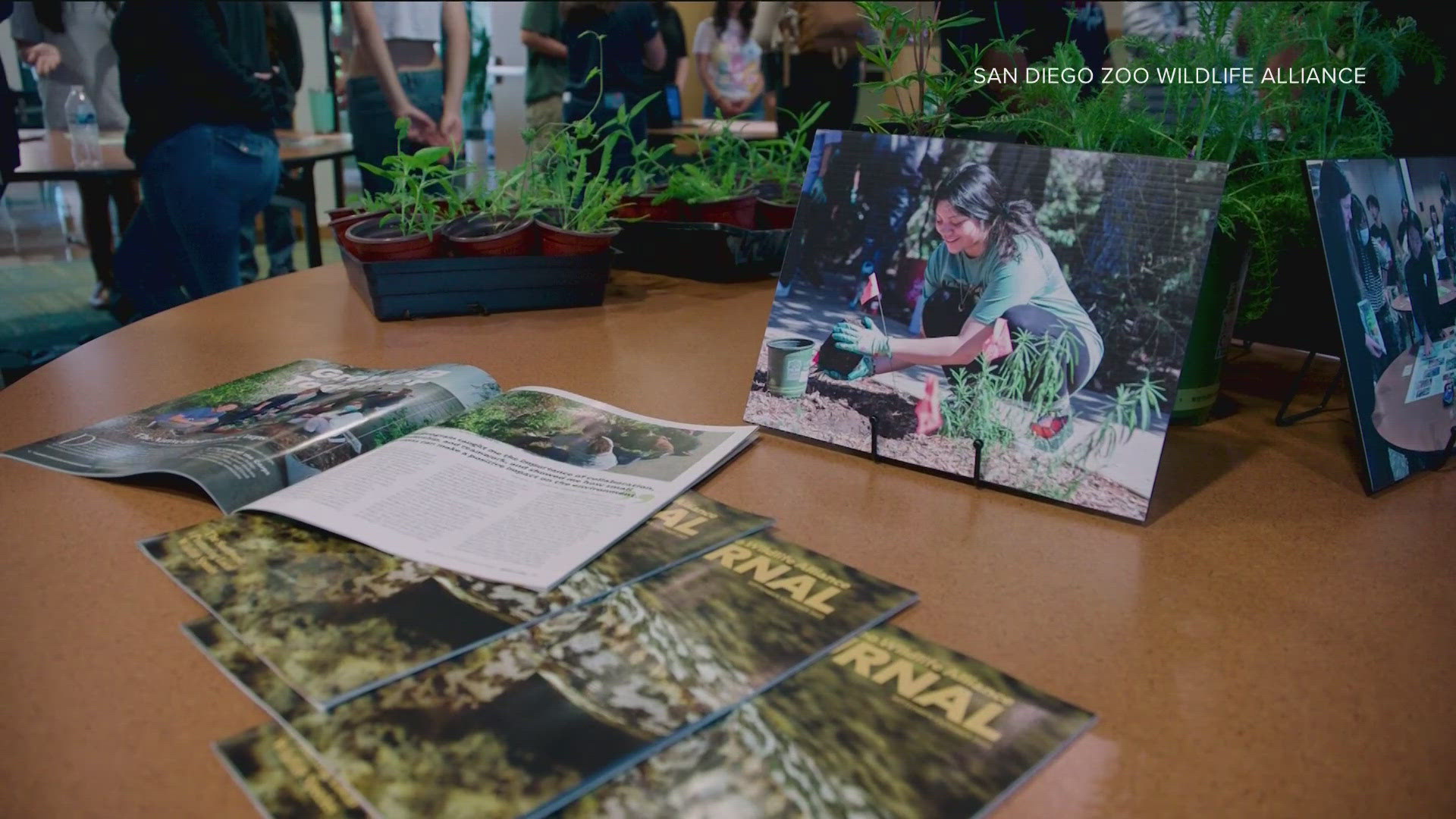SAN DIEGO — The San Diego Zoo Wildlife Alliance is helping students across San Diego County get hands on experience keeping native plants thriving in our area with their Native Biodiversity Core program that brings together high school students from diverse cultural, ethnic and lived experience perspectives for immersion in nature-based, social learning experiences designed to enhance their critical thinking skills.
Isabel Hernandez is a student at City Heights.
She is one of 60 students from Crawford High School, Hoover High School and City Heights Preparatory Charter School who spent up to 20 hours a month this school year creating a garden with plants native to our area. The students were guided by a team of scientists from the San Diego Zoo Wildlife Alliance.
"It's very rewarding to see the plants are prospering in the area that we put them in and I'm hoping soon it will be filled up with plants that we put there," Hernandez reflected.
"Some of the challenges I would say is the plant design and figuring out which plants would fit well where our location is at. Figuring out the measurements sometimes was difficult because they were trying to make sure we didn't get plants taller than the sign," Hernandez added.
Maggie Reinbold is the Director of Community Engagement, Conservation Science & Wildlife Health at The San Diego Zoo Wildlife Alliance.
"The Native Biodiversity Core program is really designed to build passion and knowledge for all of our plant and animal species here in this region in young people so they can take that knowledge and passion and translate it into action," Reinbold informed.
During this multi-month program, Corps members work alongside San Diego Zoo Wildlife Alliance staff and other subject matter experts to design, implement, and monitor on-campus native wildlife gardens. These gardens are meant to attract and support local wildlife. Most Corps members identify with groups historically underrepresented in conservation and many also have limited resources for hands-on mentorship opportunities, so all Corps members receive a stipend for program service hours to further reduce barriers to participation.
"We started by just recruiting a number of students in San Diego Unified School District into the program. We took them to nature-based learning experiences throughout San Diego County and then we took them back to their campuses to really focus that newly inspired knowledge and effort into designing the first set of gardens," Reinbold said.
Corps members spend 10-20 hours per month on their school campuses surveying for appropriate sites, co-developing site-specific garden plans, working through administrative review and approval, putting approved garden designs into action, debuting new wildlife gardens for faculty and classmates, and co-developing plans for short-term and long-term garden monitoring and maintenance.
The students also participate in several nature-based learning experiences at local wildlife conservation sites. These visits allow students to critically evaluate how human-mediated change in our environment relates to changes in fire regimes, water usage, and ultimately loss of local biodiversity in Southern California and beyond. This kind of hands-on, nature-based learning is especially important, as species are being lost at unprecedented rates right in our own backyard, part of the California Floristic Province, a world-renowned biodiversity hotspot.
The students presented their program findings to Native Biodiversity Core leaders and organizers at a special event at the Beckman Center for Conservation Research, one of the largest conservation centers in the world late May.
"When they talked about the program and their experiences in the program I myself got a little emotional because a lot of times it got really personal. They never saw themselves in this kind of a role or program and it really opened up their mind to opportunities not just now but in the future," Reinbold shared.
Now that the school year is finished, Isabel and the students are tasked with taking the skills they learned and bringing the idea of conservation - specifically keeping plants that are native to San Diego - around San Diego.
"The work that I've done so far is putting about 41 native plants in front in one area at our school by the sign," Hernandez shared proudly.
WATCH RELATED: Zoo Day | Rare, endangered birds at San Diego Zoo Safari Park

